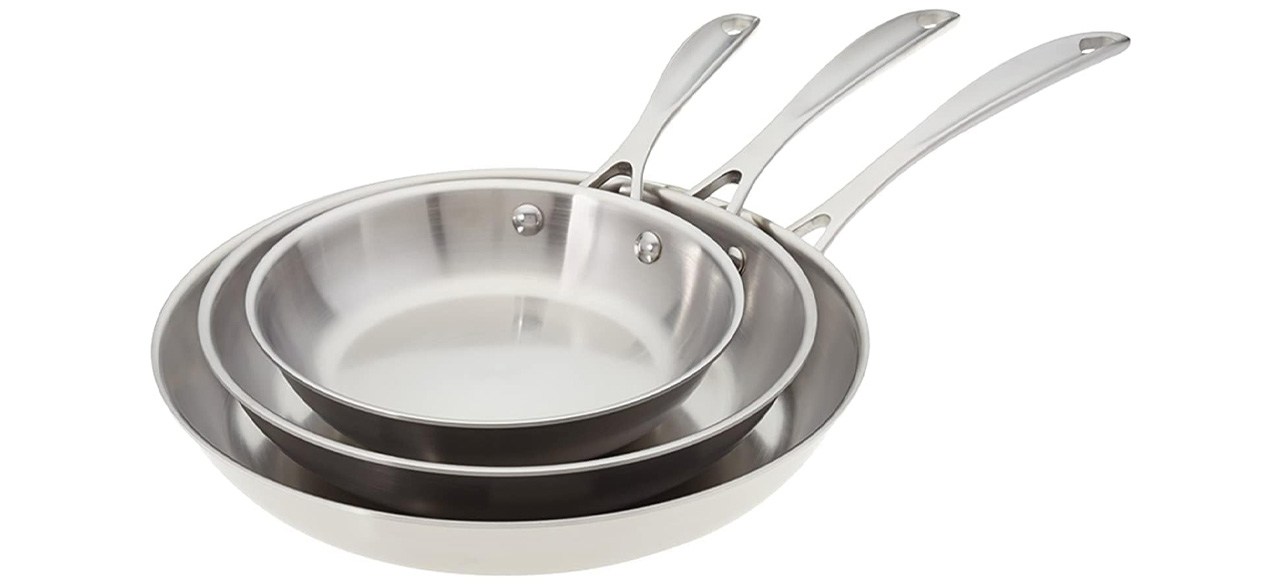Switch from nonstick cookware to stainless steel for better health and cooking results.
As awareness of health and environmental concerns continues to grow, home chefs are increasingly reevaluating their kitchen choices, particularly regarding cookware. The presence of per- and polyfluoroalkyl substances, commonly referred to as “forever chemicals,” in nonstick cookware has raised alarms among health experts. These substances, known for their persistence in both the environment and the human body, can migrate into food during cooking, particularly when nonstick surfaces are scratched or overheated.
In light of these concerns, many culinary experts are advocating for a shift toward stainless steel cookware. Unlike nonstick alternatives, stainless steel does not contain harmful coatings that can flake or degrade over time. This type of cookware offers both durability and safety, allowing for a cooking environment free from controversial chemicals. While nonstick cookware can still be used at temperatures below 500 degrees Fahrenheit, care must be taken to avoid metal utensils that could scratch the surface, and any pans showing signs of coating damage should be disposed of promptly.
For those committed to eliminating nonstick options altogether, a range of stainless steel cookware sets is readily available. Reputable brands such as Le Creuset, Caraway, and Cuisinart offer collections that are entirely free of PFAS substances. Although the initial investment may be higher compared to traditional nonstick pans, the long-term benefits include peace of mind regarding the absence of hazardous chemicals in one’s cooking.
Transitioning to stainless steel may require some adjustment. To enhance the cooking experience, it is recommended that chefs preheat their pans over medium heat. Adding a small amount of oil or butter will help create a nonstick surface, as the oil begins to shimmer. It is crucial to allow food to cook undisturbed until it naturally releases from the pan before attempting to turn or stir. Proper heat management is also essential to prevent sticking.
Cleaning stainless steel cookware can be straightforward; soaking pots and pans can significantly ease the removal of stubborn food particles, reducing the need for intensive scrubbing.
For those considering new cookware, several highly-rated stainless steel sets stand out. The American Kitchen three-piece skillet set, available in various sizes, offers sturdy construction and ergonomic handles, making it a practical choice. Cuisinart’s 11-piece cookware set captivates with its sleek design and efficient heat distribution, while Caraway’s premium five-ply cookware ensures even heating. Le Creuset’s essential five-piece collection is known for its exceptional craftsmanship, delivering both functionality and aesthetic appeal. Meanwhile, the Calphalon Classic ten-piece set provides a cost-effective solution without compromising on essential features, such as dishwasher safety and stay-cool handles.
In conclusion, opting for stainless steel cookware represents not only a healthier choice for home cooking but also a sustainable lifestyle decision, setting the stage for safer, chemical-free meals. As consumer preferences continue to evolve, the movement toward safer kitchen practices will likely influence future cookware designs and manufacturing standards.
Media News Source







